Learning for Sustainability: young people and practitioner perspectives
This report is based on research conducted by a team at the University of Dundee into the understanding and implementation of Learning for Sustainability amongst young people aged 14+ in school and community learning and development settings and the practitioners responsible for their education.
3. Scoping survey findings
3.1 Overview
A survey was administered to eight local authorities to be disseminated to all secondary school and CLD settings. A total of 52 responses were received, of which the majority (n=46; 90%) were from those in secondary schools. Due to the low response rate from other education settings, the analysis below is based on these 46 respondents. Responses below report the percentage who 'agree' or 'disagree' and combine responses from agree and agree strongly or disagree and disagree strongly unless otherwise stated.
3.1.1 Familiarity with LfS
The majority of participants Agree (37%) or Agree Strongly (59%) that LfS is an approach to life and learning which enables learners, practitioners, schools and their wider communities to build a socially-just, sustainable and equitable society. Respondents Agree (85%) that sustainability can be described as 'everyone doing their own little bit and fitting into their lifestyles'. Opinions on whether LfS is infused into the whole of Scottish society and helps build our capacity to contribute to sustainability locally, nationally and globally, are more divided: 57% Disagree and 43% Agree.
The majority of participants are familiar with LfS as part of the Curriculum for Excellence (CfE) and can explain what it means (80% Agree). They are generally aware of how LfS aligns with GTCS standards (70% Agree) although less familiar with the Sustainable Development Goals (SDGs) and how they link to LfS (57% Agree) or other national strategies (e.g. NPF, Scottish Attainment Challenge, GIRFEC) (44% Agree) (Figure 1).
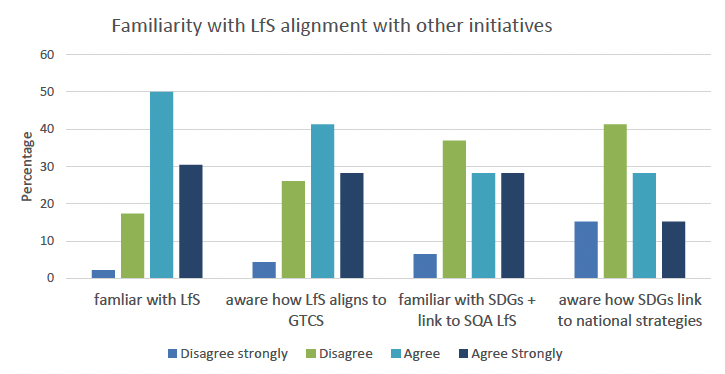
3.1.2 LfS in teaching and practice
Around two-thirds of participants felt confident that they demonstrate LfS in their practice (64%) and that they know where to find LfS information and resources (60%). Just over half felt empowered to teach about sustainability (56%) or were confident with the types of pedagogies that can be used to teach LfS (56%) (Figure 2). Nevertheless 63% did adapt their teaching during COP26.
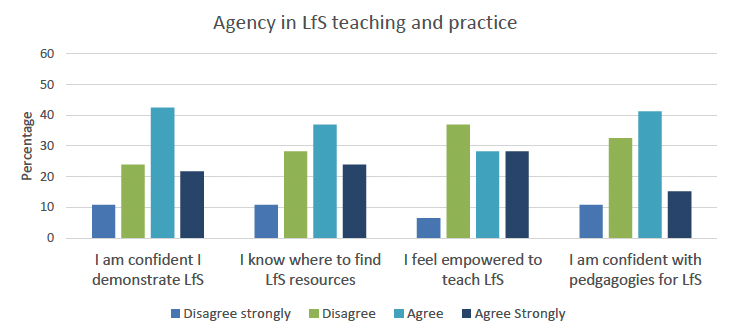
3.1.3 Perceived learner engagement in LfS
The majority of participants agree the learners they work with are encouraged by them personally (85%) or the education setting (76%) to learn and engage in sustainable practices, and that their learners talk about sustainable actions (60%). Around half (53%) agree learners are aware of sustainable practices across their education community, although less than half agree (46%) learners are empowered and involved in the development of their educational setting's approach to LfS.
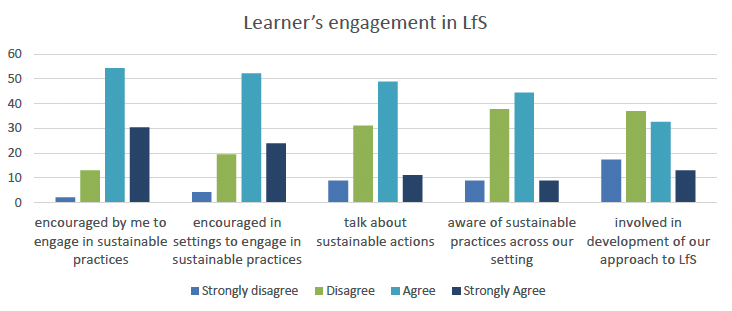
3.1.4 Stakeholder engagement in developing whole-school approach
In developing a whole-school approach to LfS, participants feel it is unlikely that young people (56% Disagree), parents (80% Disagree) or community members (65% Disagree) have been involved (Figure 4).
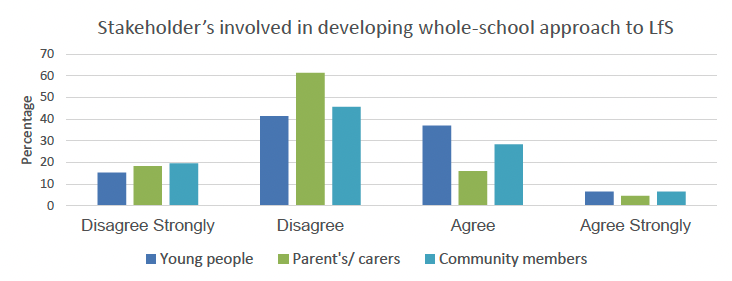
3.1.5 Whole-school engagement with LfS
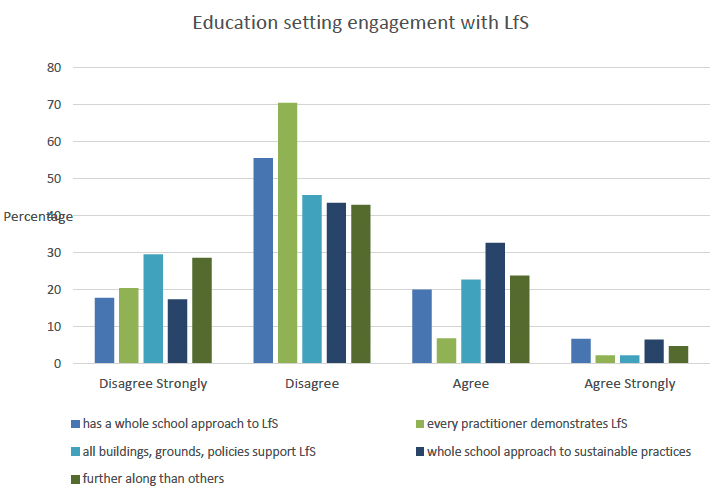
A majority of respondents said that their education settings do not have a whole-school approach to LfS that is robust, demonstrable, evaluated and supported by leadership at all levels (73%) (Figure 5). Developing (86%) and implementing (88%) a whole-school approach has not been easy, and most disagree that embedding a whole-school approach has worked well (71%). Only 29% agree they and their colleagues share a deep understanding of LfS and know what it means in their education context. As shown in Figure 5 the majority disagree that every practitioner demonstrates LfS in their practice (90%), all buildings grounds and policies support LfS (75%), there is a whole-school approach to sustainability (61%) and that they are further along than other school/education settings in implementing LfS (71%). Whilst the majority Agree that their education setting supports them to engage in LfS (60%), more disagree when it comes to support for training (62%) and providing time and resources (74%) (Figure 6).
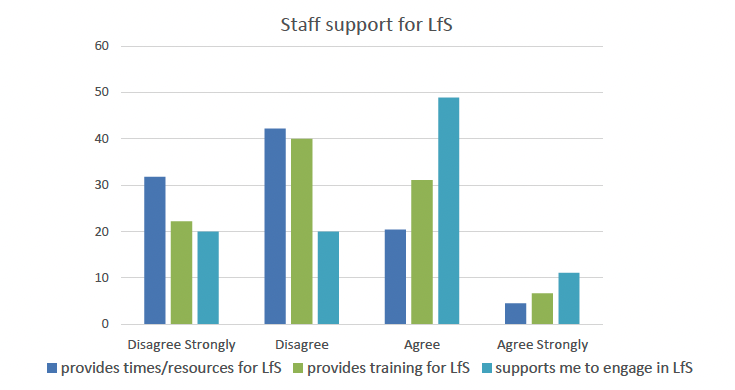
3.1.6 Conclusions
In summary, most practitioners agree that LfS and sustainable practices are approaches towards achieving socially just and sustainable societies. They are generally able to engage with LfS and feel learners are encouraged to engage with sustainable practices. Whilst education settings are likely to support staff to engage in LfS, participants feel that they are less likely to provide the resources and time needed. Participants have less knowledge on the extent to which LfS links to other national strategies or is embedded across Scottish society. Participants believe that young people, parents and community members are not as involved with the development of LfS strategies and approaches as they could be. The findings suggest that education settings do not find the process of developing a whole-school approach to LfS easy and most do not have one in place.
Contact
Email: Josh.doble@gov.scot
There is a problem
Thanks for your feedback